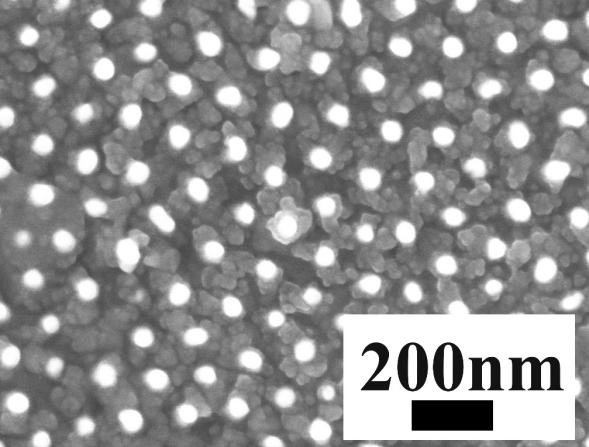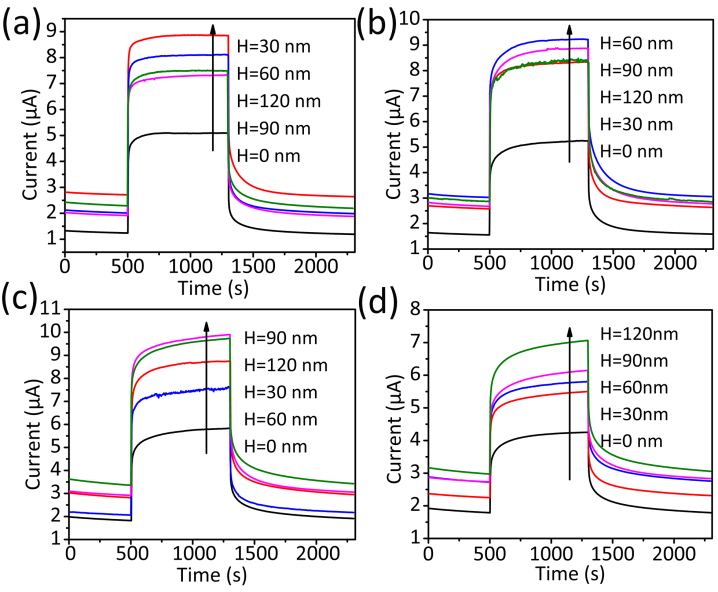Recently, the research group led by Prof. FEI Guangtao, working in the laboratory of and Nanotechnology of Institute of Solid State Physics, Hefei Institutes of Physical Science, has made progress in plasma-enhanced wide-band photodetectors, and the related research results have been published in Journal of Materials Chemistry C entitled Broadband tunable wavelength-selective enhancement of responsivity in ordered Au-nanorod arrays modified PbS photodetector.
As a traditional infrared material, lead sulfide (PbS) has been widely used in the field of infrared detection. PbS materials with nanometer scale have been widely studied and used in visible light detectors with excellent properties.
As far as we know, for thin-film PbS detectors, the photoelectric response is still not satisfactory. The response performance of thin film lead sulfide detectors needs to be further improved.
It is well known that the common noble metal nanomaterials, such as Au, Ag Pt, Cu, have surface plasmon resonance (SPR) properties, which can produce strong electromagnetic field enhancement around them, and can be used in photoactive devices such as photoemission diodes, solar cells, photodetectors, photocatalytic systems.
Regular and ordered metal structures such as metal aperture arrays, metal antenna arrays, and metal grating could not only further enhance the surface plasmon resonance effect, but also be tuned its plasmon resonance frequency characteristics by adjusting its periodic structure parameters, thus achieving the purpose of selective enhancement.
Based on the above research situation, XIE Binghe, a graduate student of FEI’s team prepared PbS thin films by chemical bath deposition.
An ordered Au nanoarray/PbS thin film composite photodetector was constructed by ultrathin open-ended porous titanium dioxide membrane (UOP-TM) as a mask. Due to the plasmon resonance enhancement effect of Au ordered array, the responsivity of the composite thin film photodetector exhibits a dramatical enhancement by up to 125%-175% higher than that of the pure PbS thin film detector.
Furthermore, the enhancement shows obvious wavelength selectivity when the height of the Au nanoarray is changed. The position of the strongest enhancement wavelength of the detector responsivity changes, that is, with the height increasing from 30 nm to 120 nm, the peak position of the strongest enhancement gradually shifts red from the visible light band (450 nm) to the near infrared band (980 nm).
The above results will provide the design and idea of thinking and development for the research and development of plasmon resonance enhanced photodetectors, and also shows potential application value.
The above research is supported by the National key R & D Program and the National Natural Science Foundation.

Fig. 1. SEM images of PbS film modified by Au nanorod arrays. (Image by XIE Binghe)

Fig. 2 Comparison of current–time characteristics with on/off switching of PbS film (H=0 nm) and Au nanorods modified PbS films with four kinds of height (H=30 nm, 60 nm, 90 nm, 120 nm) under light illumination.(a) 450 nm (b) 532 nm (c) 660 nm (d) 980 nm. All tests were performed with a power intensity of 54.16 mw /cm2. (Image by XIE Binghe)

Fig.3 (a) Finite-difference time-domain simulation of plasmon resonance enhancement of the cross sectional electric field distribution near Au nanorods with the height of 30nm, 60nm, 90nm, 120nm. (b) The dependency between relative growth value of photocurrent and excitation wavelength for PbS film (H=0 nm) and Au nanorods modified PbS films with four kinds of height (30 nm, 60 nm, 90 nm, 120 nm). (Image by XIE Binghe)
Contact:
ZHOU Shu
Hefei Institutes of Physical Science (http://english.hf.cas.cn/)
Email:zhous@hfcas.ac.cn
 Tel: +86-551-65591206
Tel: +86-551-65591206
 Fax: +86-551-65591270
Fax: +86-551-65591270
 Emai: zhous@hfcas.ac.cn
Emai: zhous@hfcas.ac.cn
 350 Shushanhu Road
350 Shushanhu Road